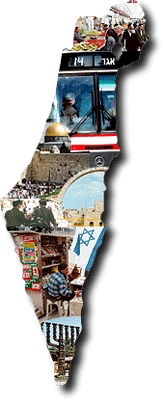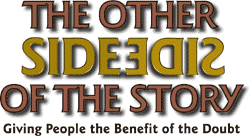Light Lines - Korach
Parshat Korach
5 Tammuz 5760 / 8 July 2000 (Outside Israel)
28 Sivan 5760 / 1 July 2000 (In Israel)
Ohr Somayach Home Page
MODEM DOWN
"$500 for a pair of tefillin! You must be joking! For a couple of leather boxes with some Hebrew writing in them? Why, for a fraction of the price I could get something almost identical. If the whole point of tefillin is to be a reminder, what do I need all this crazy quasi-scientific precision for? What does it matter if there's a hairline crack in one letter? It's so small you can hardly see it!"
"Open up your computer. What would happen if I took an X-acto razor blade and cut one of the wires here in the modem?"
"Well of course, it wouldn't work...the modem won't receive anything."
"It's exactly the same regarding tefillin -- if there's the tiniest break in a letter, then the spiritual modem called tefillin won't receive anything."
In this week's Parsha, Korach, the first voice of disunity amongst the Jewish People, asked Moses if a house full of Torah scrolls still needs a mezuza on the doorframe. "Yes," said Moses. Korach started to mock him by saying, "If a single mezuza scroll affixed to the doorframe of a house is enough to remind us of G-d, surely a house full of Torah scrolls will do the job!"
In a way, Korach was the first proponent of "Kosher Style Glatt Treif, As long as it looks Jewish from the outside, it's fine". According to Korach, the mitzvahs are only symbolic, devoid of absolute performance parameters. Moses's answer was that the Torah's mitzvahs function within strict operational criteria: One mezuza on the door is what the Torah requires, no more and no less, even if a house full of Torah scrolls may look more Jewish...
|
Ohr Somayach Home Page |
 Selections from classical Torah sources which express the special relationship between the People of Israel and Eretz Yisrael MISHKENOT SHA'ANANIM The name chosen for the neighborhood, "Dwelling of Tranquility," was intended to convey a sense of security to the brave souls prepared to move outside the walls of the Old City of Jerusalem and face the danger of Arab bandits. It was founded in 1860 by the English Jewish philanthropist, Sir Moses Montefiore, thirteen years before the building of Meah Shearim, and had few takers for its free apartments. Its pioneering produced results, however, and by 1888 there were ten Jewish neighborhoods west and northwest of the Old City. |
|
Ohr Somayach Home Page |
Assume that others are noble, and try to understand their actions in that light. Otherwise, you may end up feeling like a big...
Dumbo
"She looks like an elephant! She is...she is an elephant!" The little girl could hardly believe her ears. Had the blaring noise of the wedding band skewed her hearing? Or were two nearby ladies engaged in the most animated ridicule of a young woman sitting a few tables away?
"Just look at her nose," said the one well-dressed wedding guest to the other. "She's an elephant, if I ever saw one." The other woman nodded.
The young eavesdropper turned red. She quickly rose from the table and walked over to her mother's table. "Mommy," she said, "see that girl sitting over there? She looks like a very nice girl, doesn't she?"
"Why, yes," said the mother. "Why do you ask?"
"Because I heard some ladies talking about her...they said such awful things...they said she's an elephant!"
Her mother's face lit up in a smile. "Dear, I know that girl, and those women aren't making fun of her. That's her name. Her name is Elifant, Rhonda Elifant!"
|
Ohr Somayach Home Page |
Name That Tune
Peter Fröhlich wrote:
Shalom. As a harpist I am interested in those psalms, which David once played before King Saul. Do you know if some of these original psalms in the original tunes are still known? Three years ago I was there in Israel. I got some psalm-songs in a museum in Jerusalem, but I am not sure if they are original. Many greetings.
Dear Peter,
I don't know what songs or melodies David sang for King Saul.
In a traditional book of the Bible in Hebrew, you will find markings on most of the words. These markings are the cantillation symbols which indicate the melody.
There are four different groups of melodies indicated by these symbols:
- The Pentateuch
- The Prophets
- The Five Megillot
- The Books of Job, Proverbs, and Psalms.
The melodies of the first three groups are well known and used. There are various customs regarding these melodies.
The melody for Job, Proverbs and Psalms has unfortunately been forgotten by most of world Jewry. Yemenite Jews, however, have a traditional melody for these books as well.
Ever heard the expression "soul music?" It's a Jewish idea: Our sources say that the melody is to the written words of Torah what the soul is to the body.
Rabbi Ben E. Diction
An Anonymous Reader wrote:
I recently got a blessing from a Chassidic Rabbi. This blessing was quite astonishing (in a good way). What is the significance of a blessing from a Chassidic Rabbi?
Dear Reader,
In our prayers we say G-d "does the will of those who fear Him." As our Sages teach: "A tzaddik (righteous person) decrees, and G-d fulfills". They also teach: "Anyone who has a sick person in his household should go to a chacham (a wise person) to pray for him."
A righteous person has a greater power of prayer than most of us. Torah scholars (Chassidic or not) who have virtually perfected their character are known to have such powers. Until his passing several years ago, tens of thousands flocked to Rabbi Yaakov Yisrael Kanievsky (the "Steipler") for his blessing.
It's known that prior to their highly dangerous but successful air strike on the Iraqi nuclear reactor in 1980, the Israeli pilots appeared before the Steipler and asked for his blessing. He told them "go in peace and return in peace."
Light Insight | Love of the Land | The Other Side of the Story | Response Line Ohr Somayach Home Page |
Produced by the Office of Communications
Editor: Raphael Scott Leban
Production: Eliezer Shapiro
HTML Production: Michael Treblow
© 2000 Ohr Somayach International - All rights reserved. This publication may be distributed to another person intact without prior permission. We also encourage you to include this material in other publications, such as synagogue newsletters. However, we ask that you contact us beforehand for permission, and then send us a sample issue.
Ohr Somayach Institutions is an international network of Yeshivot and outreach centers, with branches in North America, Europe, South Africa and South America. The Central Campus in Jerusalem provides a full range of educational services for over 685 full-time students.









